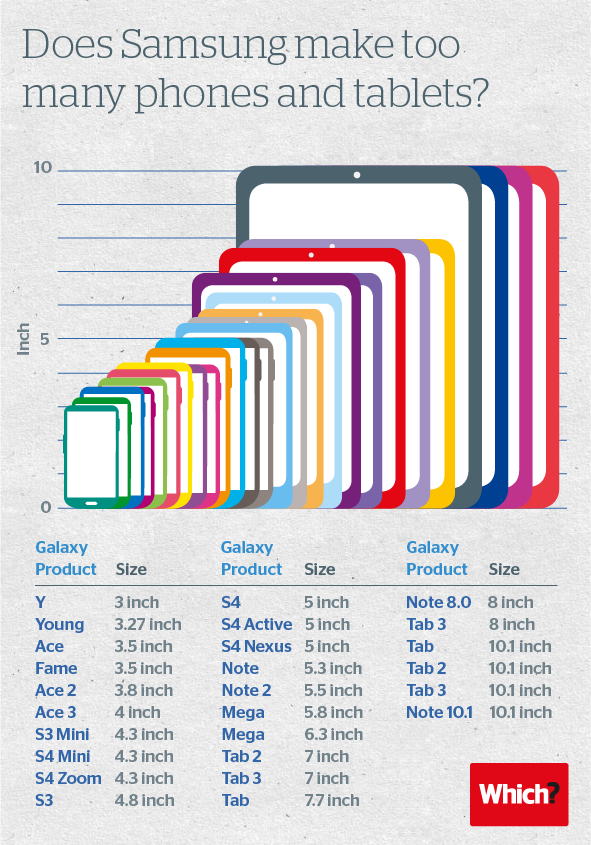What do you make of Samsung's 26 screens and counting mobile strategy?

Image credit: Which? Tech Daily
Looking at the chart above that the Brits from Which? put together, what does it remind you of? That's no less than 26 mobile devices that Samsung circulates, covering every nook and cranny in the industry, from 3-10" screen size, and that's not even counting the dual SIM or different carrier versions. It branches out into territories nobody had ever set foot before, like the Note and Mega lines, but also steps into niches just for the sake of being there, like with the S4 Zoom, slapping together a quick answer to the Nokia EOS and the rumored Sony Honami cameraphones.
If we take a look at the time Nokia was at its peak, right after the iPhone introduction, that year it released about 40 models, and there weren't even tablets then. Even more came in 2008, before it started shrinking the portfolio and ultimately switched platforms. There were a bunch of overlapping models with very minor updates, just like Samsung is doing now. Take last year's Galaxy Ace 2 vs Ace 3, for instance, with 0.2" screen upgrade, 0.4 GHz faster processor and a slightly bigger battery.
Nokia didn't even have any major competition then, while Samsung's flagships are threatened left and right this season by great handsets from HTC, LG, Sony, Nokia and even Huawei. Does this huge overlapping portfolio spell trouble for Samsung like it did for Nokia five years ago? After all, we are just learning that the company has issued more careful Galaxy S4 guidances to investors, and has shrunk its parts orders forecast from 30 to 20 million units for the next quarter. Samsung's JK Shin himself took to the airwaves today to try and calm the bears.
Hardly, we'd say, as there are a number of differences in the two situations. First off, Samsung makes its own components, allowing it to avoid the parts markup that external suppliers would charge, no matter how razor thin they are in this industry, while still asking street price for its devices. Second, with close to $8 billion operating profit in the last quarter and 70 million mobile devices forecast for the next, we aren't too worried about its financial state, despite that it lost $12 billion in market value the moment sagging Galaxy S4 sales projections were tipped.
Granted, Apple raked in even more with a fraction of the models and numbers Samsung sold, although there's an old saying in the investing community that market share would always trump profit share. Disruptive high margin products like the iPhone are usually caught up with by the competition in the span of few years, and if you have a small slice of the market then, it's not going to be what you are used to, is the premise.
That's why you have to move to greener pastures, or where the next explosive phase of growth is, and analysts argue that is exactly what Samsung is doing at the moment, what with the shifting focus to the midrange, and the restructuring of its flagship efforts with the Design 3.0 paradigm, reportedly coming next year. The company is perfectly aware, they say, that the flagship market is becoming cutthroat and stagnating in terms of growth potential, so it is reshuffling its mobile efforts.
What do you think, does the chart above signify Samsung's inevitable peak, or does it simply indicate that it is quickly responding to shifting mobile market tendencies, trying to capture the biggest slice possible of the burgeoning midrange market, after it carved a huge slice for itself from the already cutthroat high-end?
Follow us on Google News












Things that are NOT allowed:
To help keep our community safe and free from spam, we apply temporary limits to newly created accounts: